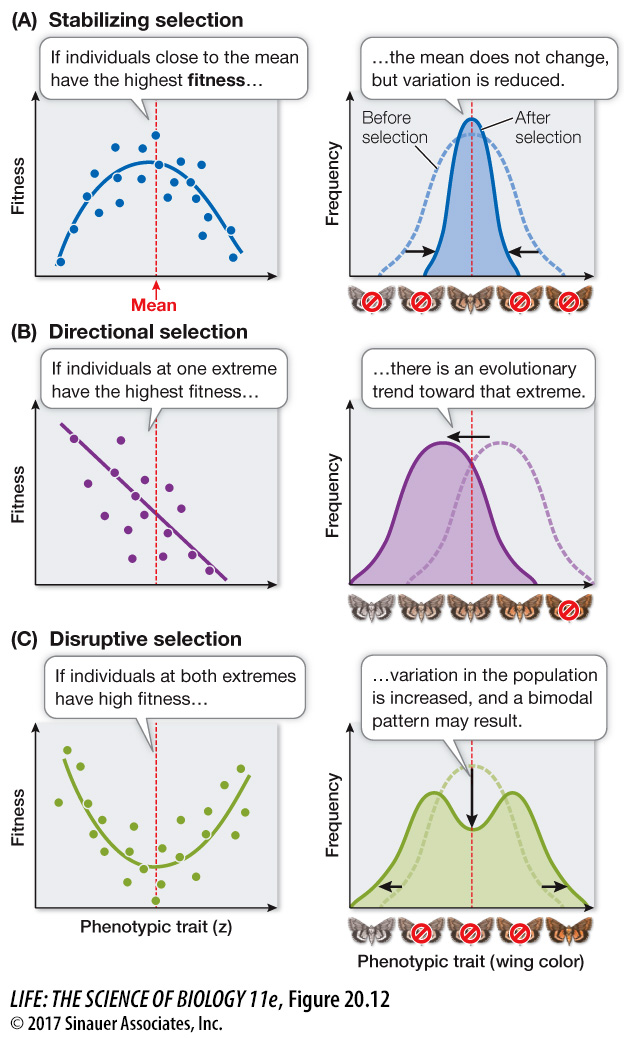key concept
20.4
Selection Can Be Stabilizing, Directional, or Disruptive
key concept
20.4
Selection Can Be Stabilizing, Directional, or Disruptive
Although evolution is defined as changes in the genetic makeup of a population from one generation to the next, natural selection acts directly on the phenotype—
focus your learning
Natural selection can alter the distribution of a quantitative trait in a population over time.
Changes in reproductive rate do not necessarily change the genetic structure of a population. For example, if all individuals in a population experience the same increase in reproductive rate (during an environmentally favorable year, for instance), the genetic structure of the population will not change. Changes in numbers of offspring are responsible for increases and decreases in the size of a population, but only changes in the relative success of different phenotypes in a population will lead to changes in allele frequencies from one generation to the next. The fitness of individuals of a particular phenotype is a function of the probability of those individuals surviving multiplied by the average number of offspring they produce over their lifetimes. In other words, the fitness of a phenotype is determined by the relative rates of survival and reproduction of individuals with that phenotype.
Until now, we have only discussed traits influenced by alleles at a single locus. Such traits are often distinguished by discrete qualities (black versus white, or smooth versus wrinkled) and so are called qualitative traits. Many traits, however, are influenced by alleles at more than one locus. Such traits are likely to show continuous quantitative variation rather than discrete qualitative variation, and so are known as quantitative traits. For example, body size is a continuous variable; the distribution of body sizes of individuals in a population, a trait that is influenced by genes at many loci as well as by the environment, is likely to resemble a continuous bell-
Natural selection can act on characters with quantitative variation in any one of several different ways, producing quite different results (Focus: Key Figure 20.12):
Stabilizing selection preserves the average characteristics of a population by favoring average individuals.
Directional selection changes the characteristics of a population by favoring individuals that vary in one direction from the mean of the population.
Disruptive selection changes the characteristics of a population by favoring individuals that vary in both directions from the mean of the population.
focus: key figure

Q: Why might selection for a trait in a population shift from directional to stabilizing selection over time, even if the optimal value for the trait stays constant?
If the mean value of a trait in a population is below the optimal value for that trait, then the mean will evolve to be closer to the optimum through directional selection. But, as the population mean reaches the optimum, then the population will experience stabilizing selection (with selection against individuals that are both below and above the population mean).